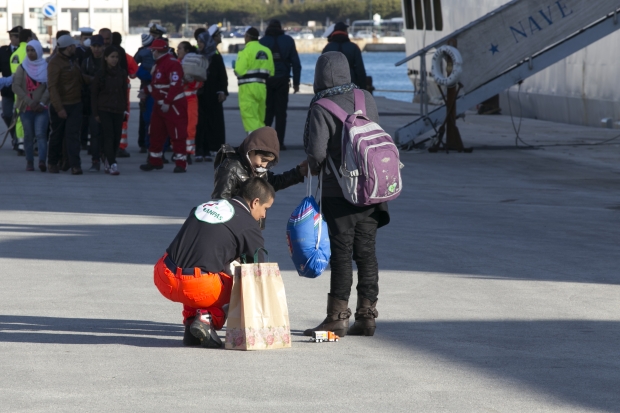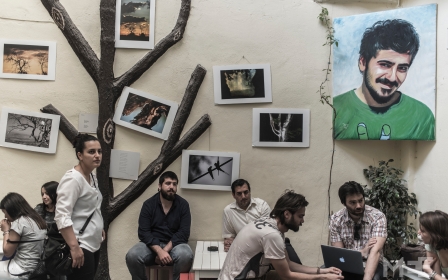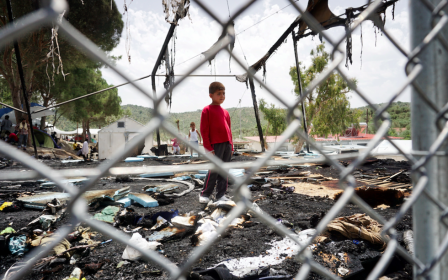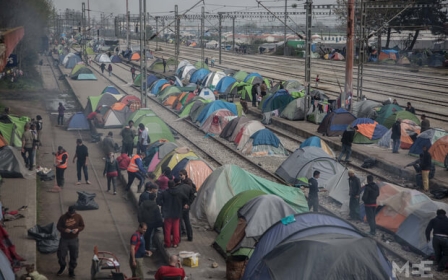Surge in unaccompanied refugee children leaves Italy reeling
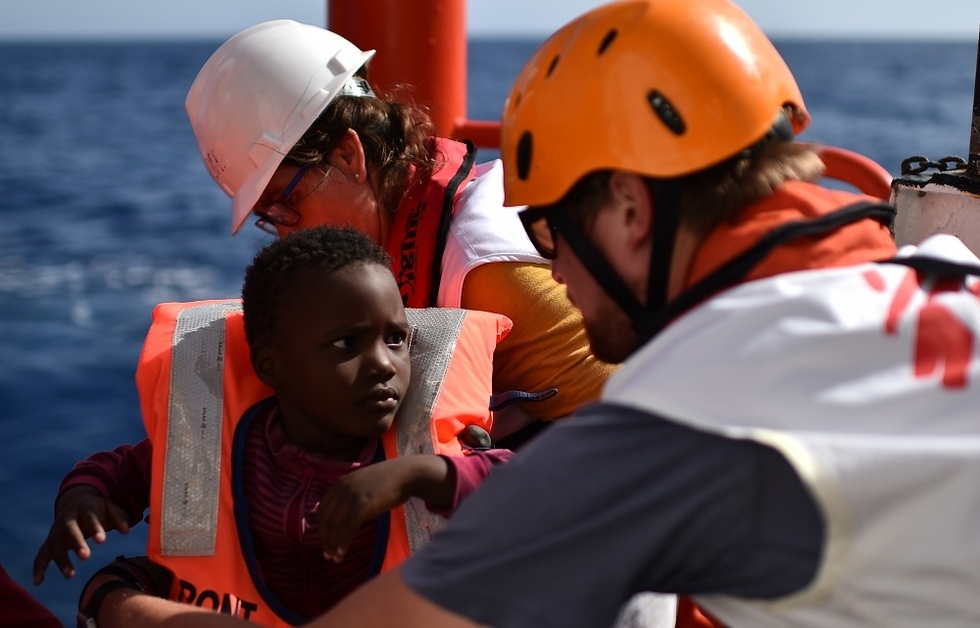
CATANIA, Italy - Favour was just nine months old when she landed on Italy’s shores alone. Her pregnant Nigerian mother and father suffered severe chemical burns and then drowned as their vessel capsized in the Mediterranean.
She is believed to be the youngest unaccompanied arrival in Italy, but Favour is just one of a growing number of children who are risking everything, and sometimes paying the ultimate price, to make it to Europe.
Save the Children told Middle East Eye that 7,900 unaccompanied minors have crossed so far this year, representing 90 percent of all child arrivals and about 15 percent of total arrivals. The figure is more than double the numbers recorded in the same period last year.
The growing number of refugees and others fleeing their homes worldwide has hit a new record, spiking to 65.3 million people by the end of 2015, the United Nations said on Monday.
Traditionally, most children have come from sub-Saharan Africa although this year has seen a huge influx of unaccompanied minors from Egypt, who are now the largest single group and are sometimes taking extreme risks to make it.
Whereas most arrivals from Libya get rescued in 24 hours, those coming from Egypt can spend up to 10 days at sea, often running out of water and food and possibly even being forced to switch vessels in the middle of the Mediterranean.
Fleeing one hell, finding a worse one
Ade, a Nigerian who said he was 16 and arrived in Sicily earlier this year, told Middle East Eye he had fled “bad things” in his village, although he said what he found in Libya – a key transit point for Europe - was much, much worse.
The camp where the people smugglers held him for several weeks was a “hell” where there was “little food and water and where guards often beat people” waiting to cross.
Other survivors, who spent time in the smuggler-run camp, have also recalled how smugglers often rape, torture and even kill with impunity.
A 10-year-old Eritrean boy, interviewed by Save the Children upon arriving in Sicily, said he saw a teenage Eritrean girl being raped repeatedly in a Libyan camp.
After weeks of abuse the girl stopped eating, grew weak, and then died. Like so many other minors, the girl had been travelling without her family and there was no one there to help her.
The trend of minors coming alone has become so prominent that they now make up 90 percent of all newly arrived children, the UN said last week in a damning report.
The upswing marks a whole new set of challenges for an already overstretched Italian state and aid groups as Europe braces for another summer of heavy migration.
Overcrowded centres
With the migration season only just in full swing, gross overcrowding has already become painfully apparent.
Aid workers and activists told MEE that some minors had to spend more than a month in the new reception “hot-spots” where new arrivals are supposed to be fingerprinted and identified, although not all people are transiting through these sites as yet.
The centres – which European authorities hope will eventually register the vast bulk of all new arrivals - are only designed as temporary shelters where people should never stay more than 72 hours.
While most adults move on, unaccompanied minors get stranded because there are so few spaces available. There are no activities in the closed hot-spots, no schools, and little external support with very few journalists or activists allowed in.
“We’re only at the beginning of the season and what is so worrying is that most of them [migrant centres designed for unaccompanied children] are already at capacity,” Valentina Bollenback of the Save the Children said.
Fausto Melluso, an activist who works extensively with migrants and refugees, said that the spike in unaccompanied minors was a “very big problem this year”.
However, he stressed that the issue was not new and that Italy, and Sicily in particular, have been dealing with the problem for years with the authorities’ inability to deal with the cumulative backlog of arrivals causing the biggest problems.
“We have just not seen the relocation of minors and our system is full and there is just nowhere to take them,” said Melluso, who works with the youth-oriented Arci organisation in Palermo.
With overcrowding and poor conditions, last year half of all unaccompanied children simply vanished.
The best-case scenario, aid workers say, is that they leave to join family members or friends elsewhere in Italy or Europe but many fall through the cracks entirely.
Risk of exploitation
“We know that many unaccompanied minors are extremely vulnerable and that they end up in crime organisations,” said Save the Children’s Sicily-based spokeswoman, Giovanna Di Benedetto.
“Nigerian girls can be of particular risk of sexual exploitation.”
Like many other migrants, the girls or their families strike a deal with smugglers to pay a small fee up front and to work off the rest of the debt once in Europe.
However, bosses withhold payments and the women are often unable to pay the debts, meaning they become trapped in the system.
Efforts to identify them and protect them are underway but “this is far from easy,” Di Benedetto said.
The government has vowed to increase spending and is talking about building a large national centre, which would house a bulk of the new arrivals, but the unexpected influx of unaccompanied children, and the general fast shift in migration patterns, means that the next few months threaten to be extremely difficult.
Most of the new arrivals are aged 14 to 17, but unaccompanied children as young as nine and 10 are becoming an increasingly familiar sight.
In rare cases, children as young as five make the journey to Europe alone, almost always following the death of a parent or relative.
No precise data for underage arrivals exists, but Doctors Without Borders (MSF) estimates that half of all new arrivals travelling to Italy from Libya have been on the road for more than a year before even getting on a boat destined for Europe.
9 in 10 traumatised
This exposes children to abuse. MSF medical staff estimates that almost nine out of 10 of all new arrivals in Italy have experienced some kind of psychological trauma but that very few will get the level of care that they need.
Abe, explained that while had been given shelter and was receiving legal assistance from civil society groups, he was still finding it difficult to not think about his harrowing journey.
Many arrivals report having their feet burnt by hot pokers in order to stop them running away.
One survivor told aid workers that they saw a Gambian boy being shot dead by smugglers just for asking for more food and water. Last week, the bodies of 32 migrants abducted by people smugglers, including 20 migrant children, were found in the Niger desert.
Conditions in Libya, including in more official camps that should fall under the authority of the Tripoli government but in many cases are run by armed guards, are so poor that Amnesty International has strongly warned the EU against stepping up cooperation.
Joint operations and training risked “fuelling the rampant ill-treatment and indefinite detention in horrifying conditions,” the rights group said in a statement last week.
The exact reasons why so many unaccompanied minors are coming are not yet fully clear.
Some are coming to join family members, others are fleeing war and extreme poverty, and there are also suggestions that the spike could be down to increasingly tight asylum restrictions that have seen growing numbers of adult applications from certain countries rejected in Italy.
Favour's harrowing journey has now seemingly found a happy end, with the nine-month-old being taken into care by an Italian couple.
Hundreds of people volunteered to take her in, but she is one of the lucky ones. Thousands more children are continuing to arrive alone on rickety and dangerous boats that often capsize, killing more than 2,500 people trying to make it from North Africa to Italy this year.
New MEE newsletter: Jerusalem Dispatch
Sign up to get the latest insights and analysis on Israel-Palestine, alongside Turkey Unpacked and other MEE newsletters
Middle East Eye delivers independent and unrivalled coverage and analysis of the Middle East, North Africa and beyond. To learn more about republishing this content and the associated fees, please fill out this form. More about MEE can be found here.


